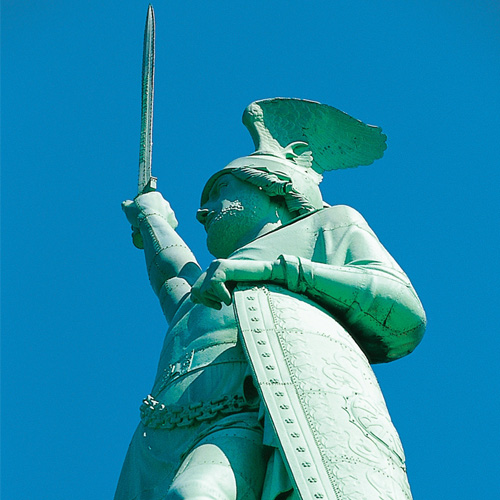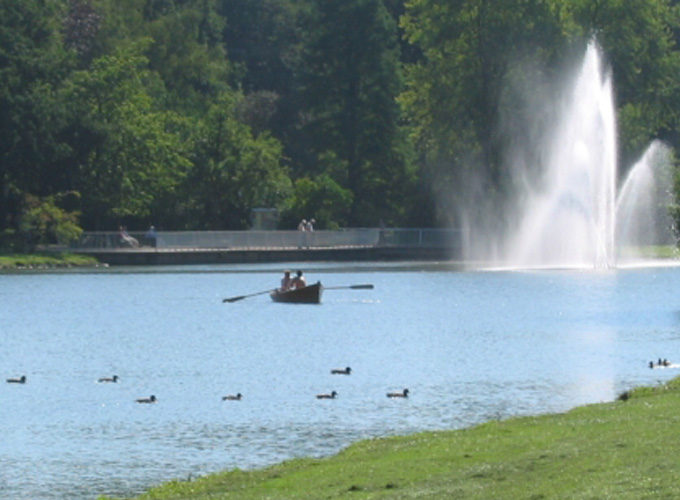
Local information
Lemgo, Detmold and the OWL Region The Old Hanseatic City of Lemgo is located in the heart of OstWestfalenLippe (OWL) in the state North Rhine Westphalia. It has a population of 43,000 and is located approximately 15km east of the Teutoberg Forest. During the period of the Hanseatic League, Lemgo was bustling with life. The city has a history of over 800 years and many interesting sights to offer. The most notable are; the city hall, St. Nicolai Church, St. Marien Church, the Süsterhaus, the old abbey and Brake Castle. The City of Detmold is nowadays known as “the city of culture in the Teutoburg Forest”. The regional theatre in Detmold, the Academy of Music and the Summer Theatre offer a broad spectrum of performances ranging from classic to modern. It was possible to live an absolutely princely life in Detmold ever since 1265. The territorial lords of Lippe used to rule here. Nowadays, the colourful hustle and bustle of young and old dominates. Both guests and local residents enjoy an exceptional city for living and shopping in the middle of a historic setting. The lively city centre with its many cafés is an inviting place to stroll and ramble. More than 600 historic buildings adorn the city, which was awarded a gold medal. Small half-timbered houses alternate with proud plastered buildings. In the centre of the old town, the residence castle, built in the Weser Renaissance style, imparts an unforgettable look into the past. The Region of Lippe was a historical state in Germany. It was located between the Weser River and the southeast part of the Teutoburg forest. The principality of Lippe was founded in 1123. After several territorial changes during the medieval times, the principality of Lippe came to end in 1918 with Lippe becoming a free state. This autonomy again ended in January 1947 when British forces incorporated Lippe into the new German state of North Rhine-Westphalia. Nowadays, the old region of Lippe has been extended and is called OstWestfalenLippe (OWL). |
|
OWL - A strong economic region The economic region of OstWestfalenLippe – OWL accounts for a fast growing economic zone in Germany, the region combines the advantages of modern big cities with the benefits of attractive medium-sized cities and small towns as well as the leisure and relaxation facilities of extensive rural landscapes. OWL is one of the strongest economic areas of Germany and the no.2 region of machine- and plant-engineering in Germany. It is predominantly characterised by medium-sized companies and by a balanced mix of industries. These are, above all, mechanical engineering, the metal processing and electrical engineering industry, and the food industry. Some of the well-known enterprises and branded companies are Wincor Nixdorf (Paderborn), Phoenix Contact (Blomberg), Weidmueller Group (Detmold), Gildemeister (Bielefeld), Miele Group (Gütersloh), and Oetker Group (Bielefeld), just to name of few. |
 Source: OWL Marketing GmbH |
Hermannsdenkmal Monument The Hermannsdenkmal Monument is located in the Teutoburg Forest and is one of the main landmarks of Detmold and the whole region. The monument is 53,5 m high and commemorates the famous Varus battle of the Teutoburg Forest in which Germanic tribes under Arminius recorded a decisive victory over three Roman legions under Varus in 9 AD. The victory of the German tribes had a major influence on the further development of the Roman empire towards the northern part of Germany. The monument is build on a large defensive earth and stone ring from old Germanic fortifications. It provides a plateau of 500 m long and 400 m wide. It was built in the 19th century by the architect Ernst von Bandel and took 37 years to be completed. |
 Source: OWL Marketing GmbH |
| Heinz Nixdorf MuseumsForum HNF is the world's largest computer museum. The permanent exhibition depicts the history of information technology in a journey through time spanning five millennia, from the origins of numbers and characters right up to the 21st century. Visitors will find hightech exhibits waiting to be tried and tested. New worlds of experience such as robotics, artificial intelligence and mobile communications demonstrate the state of the art in present-day research. |
 Source: Heinz Nixdorf MuseumsForum |
| Externsteine The Externsteine are a distinctive rock formation located not far from the city of Detmold. The rock formation is a tor consisting of several tall, narrow columns of rocks which rise abruptly from the surrounding wooded hills. The name probably means "stones of the Egge". The Externsteine were a centre of religious activity for the Teutonic peoples and their predecessors prior to the arrival of Christianity in northern Europe. At the top of the tallest stone a chamber can be found, probably used for sacrifices formerly. One wall has a circular hole cut into it which is some form of calendar. On the exact day each year, when summer turns to winter, the sun shines exactly onto this hole. |
 Source: OWL Marketing GmbH |
LWL Westfalian Open Air Museum Germany's largest open air museum allows to discover various impressions of what life in the country meant in the past. It offers manifold experiences and activities according to the season and the weather. The LWL Westfalian open air museum has a size of 90 hectares and shows more than 100 historic buildings. |
 |
Wellness & Recreation The Teutoburg Forest, considered to be the "green roof" of North Rhine-Westphalia, is right on the doorstep of Lemgo and Detmold. It is perfect for sound leisure activities in an unspoilt natural setting. In the Teutoburg Forest surroundings you can find many spas and parks which do not only invite you to enjoy the treatments of one of the numerous health resorts but are also attractive for hiking, cycling and climbing. Varied natural, cultural and historical sights are combined with our beautiful and healthy nature. The Teutoburg Forest is full of mineral springs, healing moors, and relaxing landscapes. For instance, the spa town Bad Salzuflen is located nearby Lemgo and Detmold. It is well known for its saltwater springs and thermal baths. |
|

